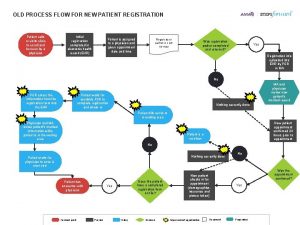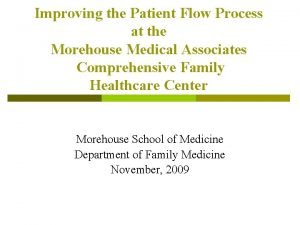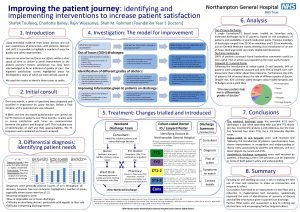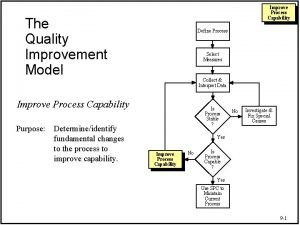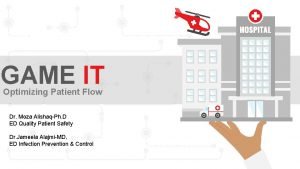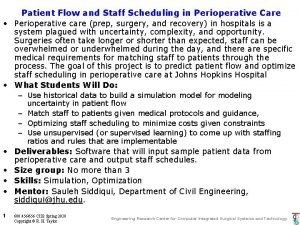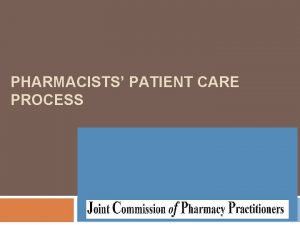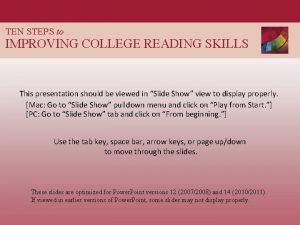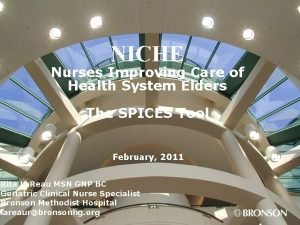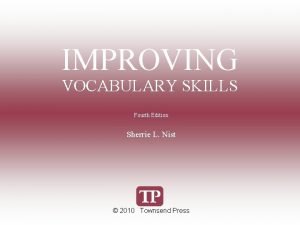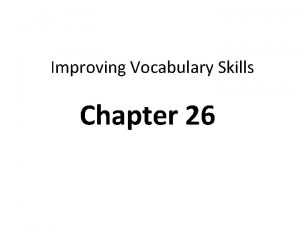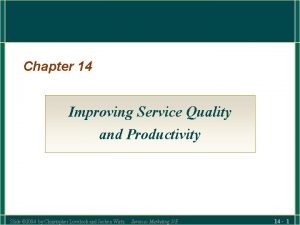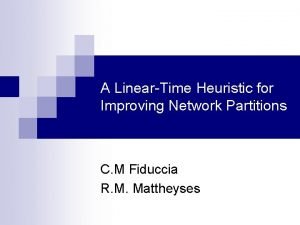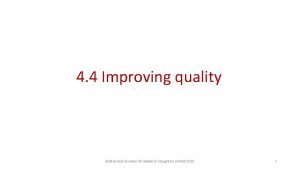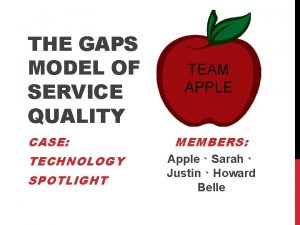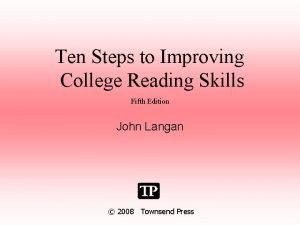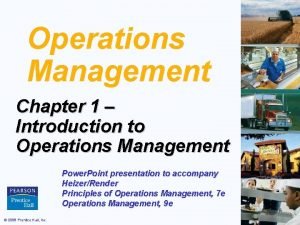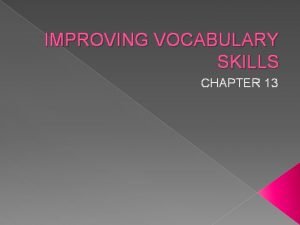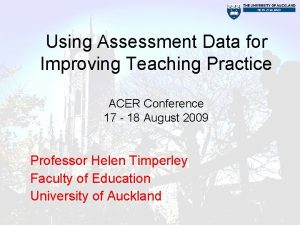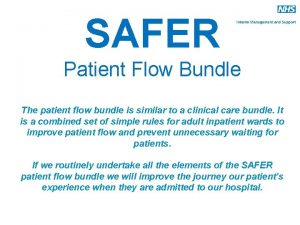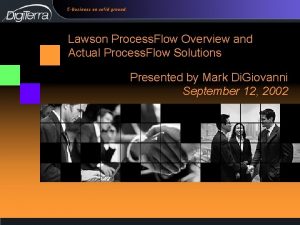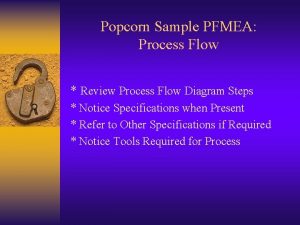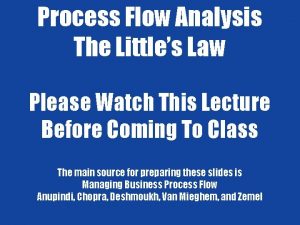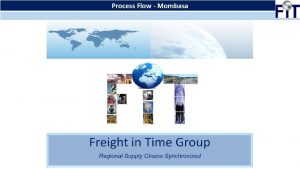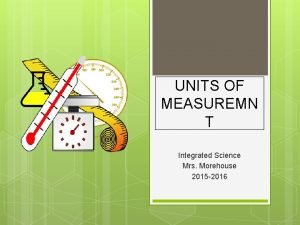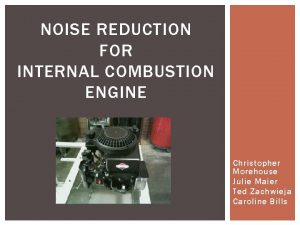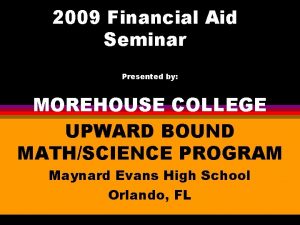Improving the Patient Flow Process at the Morehouse




























- Slides: 28

Improving the Patient Flow Process at the Morehouse Medical Associates Comprehensive Family Healthcare Center Morehouse School of Medicine Department of Family Medicine November, 2009


Background of CFHC p p p The Morehouse Medical Associates (MMA) Comprehensive Family Healthcare Center (CFHC) was established by the Department of Family Medicine to provide complete medical and preventive healthcare services to all communities, with a special focus on minority and underserved populations. The Department had two primary clinical sites, the Comprehensive Family Healthcare Center (CFHC) and the Family Medicine Center (FMC). The 5, 000 sq. ft. FMC was the family medicine residency teaching site for approximately 20 years. Due to accreditation citations, the 14, 000 sq. ft. CFHC was designed and opened in July 2004. However, due to decline in revenue and patient volume, FMC was closed with the plan to consolidate the practice into the CFHC.

Background (continued) The Comprehensive Family Healthcare Center is located in the greater Atlanta metropolitan area. p 16 full time staff p 15 residents p 20 physicians p 1, 306 visits per month p 1, 033 patients

Problems Indirect effect on efficiency of patient flow p Directly a source of patient’s dissatisfaction p No routine mechanism for communication exist p Loss of revenue by increase walk away p

Objectives 1. 2. 3. 4. 5. 6. Increase patient satisfaction Increase patient numbers Retention of patients Decrease overhead Increase Revenue Enhance patient/physician relationships

General Mission Statement A collaborative approach to implementing an interdisciplinary process designed to improving the delivery of preventive, diagnostic and therapeutic measures in order to p Maintain, restore, and improve health outcomes of individuals p Improve patient flow to maximize clinical efficiency

AIM Statement p To improve patient flow at the Comprehensive Family Healthcare Center by 30% above the present baseline over a six month period.

Patient Flow through the Clinic Pt. signs in Pt. checked in Encounter is placed on wall Pt. triaged No Back to waiting area Yes Pt. placed in a room Student Resident Preceptor Faculty Orders Preceptor sees pt. Resident (prescription) Resident discusses plan with pt. Lab Check out Writes prescription Lab Check out

Fish Bone Diagram p Schedule p Triage Time to check out p - Over booking - Walk-in p p - Room availability - Staff : MD p p p - Lab - Chaperone - Injections - Precepting - Physical struc. p p Start End - Paper work completion - Punctuality - Insurance Check - Does not know pt. is in rm -IDX not interfacing - Completing EMR inbetween pts p p p p Pt. Check in Triage to MD in Room

Pilot time-tracking log Appointment Time: Patient Check-In: Encounter On Wall: Patient in room: Doctor in room: Lab: Patient Check Out: _____________ _____________

Leverage Point p Long wait time between placing the patient in a room and when the physician enters that room.

Barriers to Successful Patient Flow Physician punctuality in the clinic p Preceptor’s late or no show to clinic p New residents each year – PGY 1 p Front office staff shortage p No printers in resident work area p

Goal p To decrease the wait time from patient arrival to MD entering room from 58 mins to 30 – 45 mins. This will decrease the overall wait time and efficiency in the clinic.

Interventions Installation of magnetic timers on exam room doors (set @ 30 min intervals) p Assigned a physician for walk-in patients p Logged physician arrival time to clinic p Encouraged standing orders by healthcare providers. p

2 nd time-tracking form

Pre (min-%) p Arrival-Appt Arrival-Wall p Wall to Room(Rm) p Pt -MD in Rm p MD in Rm-MD comp p MD comp- Ck out p MD in Rm-Ck out p Arrival-Ck out p Post-Intervention -10. 2 19. 6 (16%) 26. 3 (22%) 29. 5 (24%) 46. 3 (38%) 121. 8 -8. 5 18. 9 (19%) 18. 3 (19%) 20. 7 (21%) 27. 3 (28%) 12. 9 (13%) 40. 2 (41%) 98. 0 (20%)

-10 mins -8. 5 mins

19. 6 mins 18. 9 mins

26. 3 mins 18. 3 mins

29. 5 mins p 20. 7 mins

46. 3 mins p 40. 2 mins

121. 8 mins 98. 0 mins

Average Time Arrival to Checkout p p p p p Day Day Day 1 - 103 mins 2 - 105 mins 3 - 90 mins 4 - 103 mins 5 - 129 mins 6 - 115 mins 7 - 95 mins 8 - 109 mins 9 - 100 mins 10 -108 mins

Limitations Incomplete survey entry. p Peoples times were not synchronized p Wrong time entry by residents p Small sample size p

Principle Conclusion The total wait time was decreased by 20%: from 122 mins down to 98 mins p There was an increase in patient satisfaction p

What’s next…………. . To change the health providers template. p To survey the patients with regards to improvement in wait time. p To post results of survey in key areas along with the goals. - Front Office - Nurses Station - Residents Area - Faculty/Preceptor Areas p Second survey in 12 months. p

Literature Review www. aafp. org/fpm/20050400/61 maki p www. aarp. org/fpm/20070500/46 effi p www. aafp. org/fpm/990400 fm/38 p Advance Data from Vital and Health Statistics, no. 346, Aug. 26, 2004 p www. storkdoc. blogspot. com/2007/08/why-we-waitso-long-in-waiting-room p Study on Outpatients’ Waiting Time in Hospital University Kebangsaan Malaysia (HUKM) Through the Six Sigma Approach by Mohamad Hanafi Abdullah. p
 New patient registration process
New patient registration process Morehouse medical associates
Morehouse medical associates Morehouse college
Morehouse college Hugh gloster
Hugh gloster Improving the patient journey
Improving the patient journey Improving process capability means;
Improving process capability means; Patient 2 patient
Patient 2 patient Optimizing patient flow
Optimizing patient flow Patient flow
Patient flow Patient flow
Patient flow Admission notes hospital
Admission notes hospital Jcpp patient care process
Jcpp patient care process 10 steps to improving college reading skills
10 steps to improving college reading skills Bronson intranet
Bronson intranet Improving vocabulary skills 4th edition pdf
Improving vocabulary skills 4th edition pdf Improving vocabulary skills chapter 26
Improving vocabulary skills chapter 26 Modern software technologies
Modern software technologies Chapter 12 lesson 3 planning a personal activity program
Chapter 12 lesson 3 planning a personal activity program Improving software economics set 1
Improving software economics set 1 Improving service quality and productivity
Improving service quality and productivity A linear-time heuristic for improving network partitions
A linear-time heuristic for improving network partitions Quality business a level
Quality business a level Improving own learning and performance examples
Improving own learning and performance examples Gaps model for improving service quality
Gaps model for improving service quality Ten steps to improving college reading skills
Ten steps to improving college reading skills Starbucks inputs and outputs
Starbucks inputs and outputs Chapter 13 sentence check 2
Chapter 13 sentence check 2 A sense of belonging improving student retention
A sense of belonging improving student retention Using assessment data for improving teaching practice
Using assessment data for improving teaching practice
